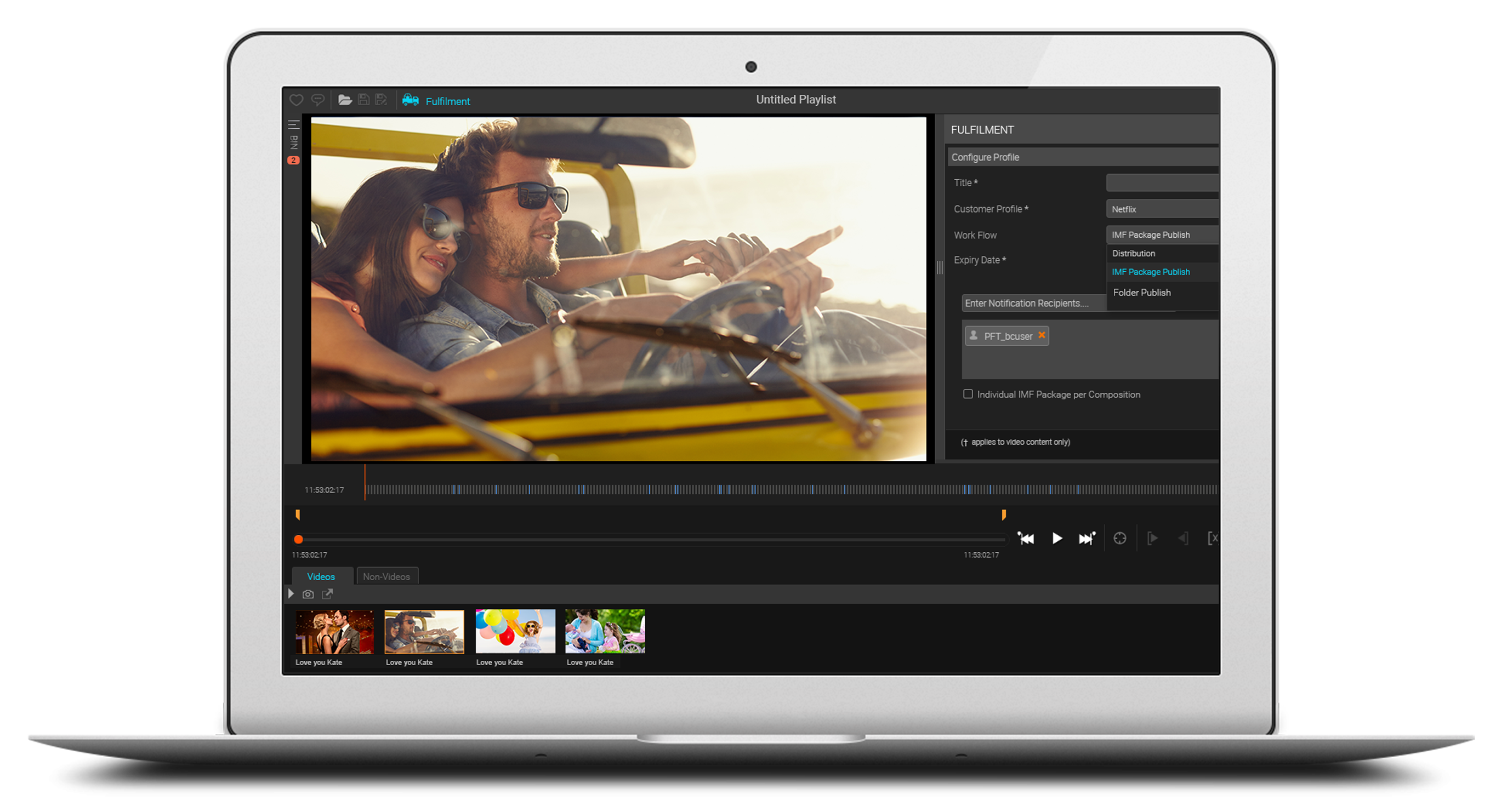IMF Compatible Players Pave Way for Automating Content Delivery in Multiple Versions
The development and adoption of the SMPTE-based IMF (Interoperable Master Format) continues to thrive within the Media & Entertainment (M&E) industry. The reasons for this are many, but primarily because IMF more easily and readily facilitates the management and processing of multiple content versions that need to be created for distribution across global channels.
The file-based framework (SMPTE ST 2067-2) of IMF, derived from the DCP (Digital Cinema Package) packing standard, includes essence containers, audio and timed text essence formats, basic descriptive metadata and complex playlists. High definition, SDR images, and JPEG 2000 image coding is supported, making it ideal for studios, post production facilities, the manufacturing community and, as a delivery format to OTT services.

Each content version is embodied in a composition of finished work that is logically pieced together with localized audio/video/text elements to develop region-specific masters for video streaming service/linear broadcast platforms. For instance, an advertisement may require three different versions – one for television broadcast, one for airline showings, and a third in a different language. In each version, the composition playlist (CPL) defines its playback timeline. Standards like IMF additionally play a key role in ensuring that storage and networks are used optimally to allow a seamless workflow for these multi-versioned, often large audio and visual works.
COMPATIBLE TECHNOLOGY
Technology solutions that support the file-based format workflow also play a key role in IMF’s growing rate of adoption. Included among those are hybrid cloud architecture and IMF-compatible solutions such as media players. The player enables collaboration and decision making in the workflow without having to access the original IMF package each time a CPL is played back, thereby easing content transfer loads and optimizing storage consumption across streaming locations. Meanwhile, hybrid cloud architecture has been instrumental in offering cost savings (by decreasing capital expenses and shifting costs to lower operating expenses), auto-scalable storage, and end-to-end automation of media asset monetization workflows. A hybrid architecture also helps ensure security because the content resides on-premise, while the applications run on the cloud.
[Read: IMF: Unleashing The Benefits Of File-Based Content]
IMF packages may reside in the Cloud (i.e. Amazon/Azure), remote locations or customer premises and may be composed using any of the desktop CPL editing solutions such as Clipster, Color Font, Gray Meta, and Netflix CPL Editor, among others. IMF-compatible players can accommodate these many variations and provide the ability to preview, playback, review, and distribute a CPL with all its essences, including video, audio, and captions, over streaming proxies. IMF players can additionally ingest complete and supplemental IMF packages and perform functions including search, playback, upload and download complete or partial packages or updates, as well as perform distribution of IMF packages or rendered and transcoded output (video files rather than packages).
The professional video industry's #1 source for news, trends and product and tech information. Sign up below.
BEHIND THE SCENES
The vast richness that streaming offers comes with a complexity that requires added efficiency in the workflow, and M&E organizations are responding to this by transitioning their libraries to the IMF standard. Furthermore, with 4k and 8k fast becoming a reality, the need to improve the cost effectiveness of handling such large files becomes even more imperative.
An IMF based Cloud player is designed to solve many of these issues on several levels. For instance, IMF has the ability to define new masters by preparing a playlist using logical references of the underlying content. Since a number of downstream use cases are expected to be executed from the MAM, an IMF player supports these activities with preview/playback and review/distribute of the compositions playlists using streaming proxies. Playback is frame accurate with all the playlist elements (audio/video/subtitles/captions) over streaming proxies. Additionally, packaging and delivery of IMF compositions is generally supported in the distributed workflow capabilities of an Enterprise Resource Planner such as Prime Focus Technologies’ CLEAR Media ERP.
Other benefits realized when utilizing an IMF player in the workflow include fewer content copies; centralized streaming over CDNs (content distribution networks) by content owners; additional solutions to help monetize centrally streamed content, originating from several different video streaming service platforms; centralized rights management for video streaming serve platforms by content owners; and improved control over piracy.
The development of IMF players and their integration into Media Asset Management platforms will prove to be exceptionally valuable in the coming years – a true asset to content creators.
